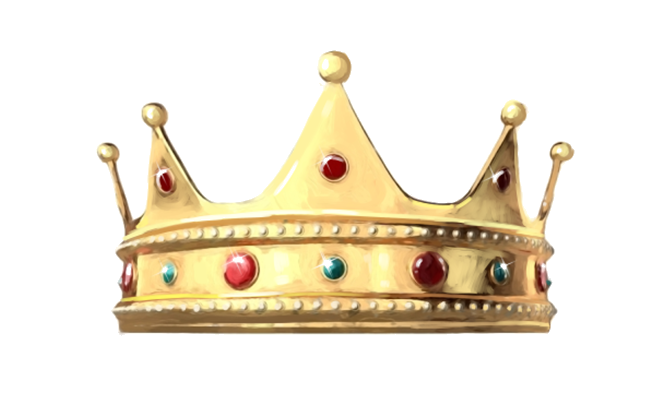On September 27, 2022, it was announced that King Charles III had selected a royal monogram featuring the Tudor Crown, along with his new regnal initials “CRIII.”
The initials “CR” stand for “Charles Rex,” which means “King Charles” in Latin.
King Charles III’s initials are presented on this monogram in a muted gold color, similar to the actual metal, possibly to signify wealth, abundance, luxury, and richness. By contrast, the initials used by his mother, Queen Elizabeth II, appear in a sunny yellow color and were created following the dark, economically depressed years of WWII.


Additionally, King Charles’ newly commissioned monogram, which was created by the Royal College of Arms, shows subtly curved and intertwined initials, with the C circling the R and the numeral III nestled inside the center of the R. On Queen Elizabeth’s monogram, her initials appear more like roman pillars, with the bold E and R standing straight and solid on either side of the smaller roman numeral II.
One might try to extrapolate meaning from such a selection by King Charles III. Queen Elizabeth’s long reign was solid and unwavering, morally straight as an arrow and unbending in the face of trials and tragedies. Possibly King Charles III wants to depict a softer, more friendly and open royal image, with a rule based on unity, fraternity, and reunification. Only time will tell – but the monogram itself may be very telling indeed.
Atop King Charles’ monogram is an image of the Tudor Crown, rather than the Imperial State Crown shown by Queen Elizabeth II.
Although it is unknown when the actual Tudor Crown first appeared on royal heads, it is estimated it was around the time of King Henry VII or his son, King Henry VIII. It was most notably cited in 1521 as part of King Henry VIII’s jewel collection.
Based on a royal portrait by Daniel Mytens painted two hundred years later, it was quite a sight to behold, much more so than today’s rudimentary image. The crown sparkled with pearls, rubies, emeralds, diamonds, sapphires, the Black Prince’s ruby (actually a large spinel), plus five fleurs-de-lis, five crosses pattée (the emblem of the Knights Templar), and two arches. Inside the fleurs-de-lis designs were small golden figures, including the Virgin Mary, three depictions of Christ, and one of St. George. (An interesting side note is that when King Henry VIII broke away from the Roman Catholic Church to create his own religion, the Church of England, he ordered the Christ figures removed from the crown. He replaced the iconic catholic images with the images of three British kings: Henry VI, St. Edward the Confessor, and St. Edmund.)

Portrait of the Tudor Crown (and King Charles I) painted by Daniel Mytens.
This crown then rested on royal pates until the unlucky reign of King Charles I, who was eventually beheaded in 1649 and the monarchy abolished. During this tumultuous time, Lord Protector of the Commonwealth Oliver Cromwell ordered that many royal artifacts be destroyed, including the Tudor Crown weighing 7 lb., 6 oz. It was thus broken apart, melted down, and the valuable bits sold for £1,100.
History often offers tantalizing glimpses into bygone times, such as in 2017 when metal detectorist Kevin Duckett, while on a treasure hunt in Naseby, uncovered a small golden figurine of King Henry VI. It is now at the British Museum undergoing analysis, but it is believed this figurine was part of the original Tudor Crown. This is bolstered by the fact that it was discovered along the route used by fleeing King Charles I after his defeat at the Battle of Naseby on June 14, 1645. We will probably never know how this little figurine left the Tudor Crown – either by design or happenstance – and, thus, was buried for centuries in a silent shroud of moss and soil.
The Tudor Crown may have been lost to us forever, but depictions of it can be found more recently. From 1902 to 1953, its image was used on various royal logos, badges, and coats of arms. In 2012, retired royal jeweler Harry Collins recreated the Tudor Crown, complete with over 344 pearls and gemstones, and meticulously handcrafted with techniques used on the original crown centuries ago. This replica headpiece is reportedly now on display at Hampton Court Palace.

King Charles III may have selected the image of the Tudor Crown in honor of kings past, possibly his grandfather, King George VI, who restored the monarchy following the abdication of King Edward VIII and who used the Tudor Crown in his own royal monogram. Other royal family members who selected this crown emblem included Edward VII, George V, and the aforementioned King Edward VIII.
Whatever his monogram or the meaning behind it, it is hoped that King Charles III enjoys a long and fruitful reign.
